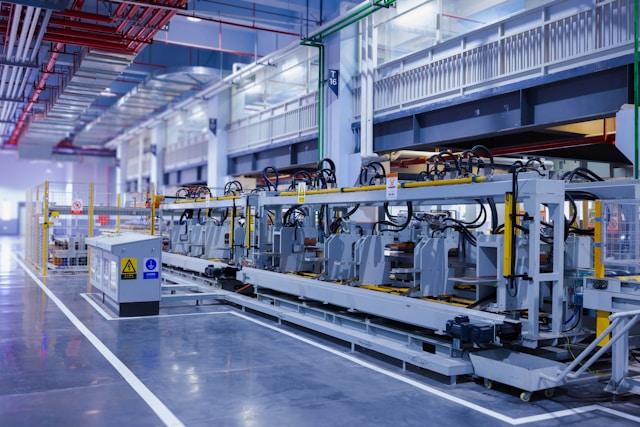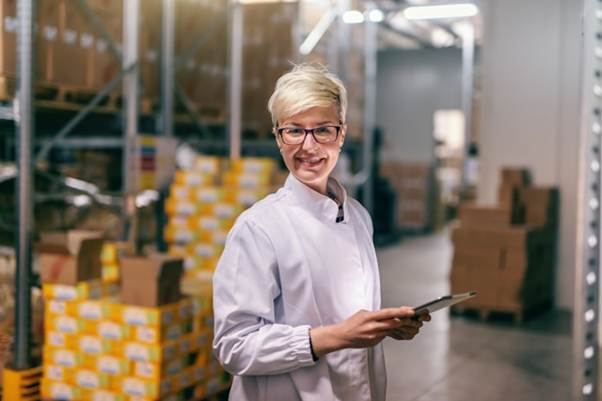
The modern packaging industry faces relentless pressure to enhance efficiency, reduce costs, and meet the growing demand for faster, more sustainable solutions. Automation has become a vital tool in addressing these challenges, revolutionizing how packaging processes are managed. By boosting production speed and ensuring consistent quality, automation is reshaping the packaging industry, and its role is expected to expand in the future. Moreover, as packaging equipment becomes more complex, the importance of reliable industrial repair services to maintain optimal performance cannot be overlooked.
In this article, we will examine the critical role automation plays in modern packaging, explore the key benefits, discuss the types of automation technologies currently in use, and evaluate the potential effects on the workforce and sustainability initiatives.
Automation refers to the use of technology to perform tasks that would otherwise require human intervention. In the packaging industry, automation encompasses a wide range of processes including filling, labeling, sealing, wrapping, sorting, and palletizing. Automation can be implemented at different stages of the packaging process, depending on the needs of the business, the complexity of the packaging tasks, and the volume of production.
Automation in packaging has evolved significantly over the years, with modern systems now integrating advanced technologies such as robotics, artificial intelligence (AI), machine vision, and the Internet of Things (IoT). These technologies enable faster, more accurate, and cost-efficient packaging operations while also allowing businesses to respond quickly to changing market demands and customer preferences.
One of the most significant advantages of automation in the packaging industry is its ability to boost efficiency and throughput. Machines and robots can work much faster and more continuously than human operators, which leads to higher production rates and reduced cycle times. Automated systems can handle repetitive tasks with precision, ensuring that production lines run smoothly without delays caused by human fatigue or error.
For example, automated filling systems can fill bottles or containers at speeds that would be impossible for manual labor to match. Similarly, automated labeling systems can quickly apply labels with high accuracy, reducing the chances of mislabeling products and ensuring consistency.
The increased speed of production not only boosts throughput but also helps businesses meet the growing demand for faster turnaround times, particularly in industries such as e-commerce and food production, where time-to-market is crucial.
In addition to improving speed, automation also enhances product quality. Automated systems are programmed to perform tasks with a high level of precision, ensuring that each product is packaged consistently and to the required specifications. For example, automated systems used for weighing, filling, and sealing products are equipped with sensors and vision systems that can detect defects, such as underfilled containers or misaligned labels, and automatically reject faulty items.
By removing the variability that comes with human labor, automation helps reduce the chances of defects or errors in the packaging process, leading to higher-quality products that meet industry standards and customer expectations.
Automating packaging processes can significantly reduce labor costs. While there is an initial investment in purchasing and implementing automation systems, the long-term savings are substantial. Automation minimizes the need for manual labor, reducing the number of employees required on the production floor. This can be especially beneficial for businesses looking to scale operations without increasing labor costs or when faced with labor shortages.
Furthermore, automation can also help reduce costs related to downtime, maintenance, and waste. Automated systems can operate around the clock, ensuring that production runs efficiently without interruptions, which ultimately results in cost savings over time.
Automation technologies, especially those that incorporate AI and robotics, provide manufacturers with greater flexibility to adapt to changing consumer preferences and market demands. For example, automated packaging systems can be easily reprogrammed to handle different product sizes, packaging formats, or design changes. This flexibility is particularly valuable in industries where product variations or seasonal demands require rapid changes to the production line.
Moreover, automation enables manufacturers to offer more customized packaging solutions, such as personalized labels, unique packaging shapes, or environmentally friendly materials. Customization, once a labor-intensive process, is now more easily achievable through automation, allowing businesses to differentiate their products and meet the growing demand for bespoke packaging.
Automation also plays a crucial role in improving workplace safety. By automating hazardous tasks, such as heavy lifting, handling toxic materials, or working in high-temperature environments, manufacturers can reduce the risk of workplace injuries and accidents. Robotics and automated systems can take on the most dangerous jobs, allowing human workers to focus on more complex or supervisory roles.
Additionally, automation can help improve workplace ergonomics by reducing the need for employees to perform repetitive, physically demanding tasks, thus lowering the risk of musculoskeletal injuries.

Robotics has had a transformative impact on the packaging industry. Robots are used for a wide range of tasks such as picking and placing items, palletizing, packing, and sorting. Industrial robots can be programmed to handle specific tasks with high accuracy and speed, making them ideal for repetitive and labor-intensive activities.
Robotic arms, for instance, can quickly and efficiently pick up products from a conveyor belt and place them into boxes or onto pallets, reducing the need for manual labor. Collaborative robots (cobots) can work alongside human operators, assisting with tasks that require a human touch while also automating repetitive actions.
Machine vision technology allows automated systems to "see" and inspect products, ensuring quality control. Cameras and sensors are used to scan products for defects, check labels, verify correct product placement, and ensure the packaging is intact. Vision systems can detect issues such as misaligned labels, underfilled containers, or packaging defects and provide real-time feedback to operators or remove faulty items from the production line.
Conveyor systems are widely used in packaging to transport products from one stage of the process to another. Automated conveyor belts are highly efficient in moving items through different stages of packaging, such as filling, labeling, and sealing. These systems can be customized to handle various product types and sizes, improving throughput and reducing labor costs.
Automated filling and sealing systems are essential for many packaging operations, particularly in industries such as food and beverage, pharmaceuticals, and cosmetics. These systems fill containers (e.g., bottles, cans, or jars) with the desired product, and then seal them securely to ensure freshness, safety, and quality.
Artificial intelligence (AI) and the Internet of Things (IoT) are driving new levels of intelligence and connectivity in packaging automation. AI allows machines to learn from data, optimize processes, and predict maintenance needs. IoT enables machines to communicate with each other and share data in real-time, allowing manufacturers to monitor and control the entire packaging process remotely.
The introduction of automation in packaging does not necessarily mean the loss of jobs, but it does change the nature of the workforce. As packaging processes become more automated, the demand for manual labor decreases, but the need for skilled workers in areas such as robotics, AI, and machine maintenance grows. Workers must adapt to new technologies and learn to operate, troubleshoot, and maintain automated systems.
While automation will replace some lower-skill jobs, it also creates new opportunities for higher-skilled positions, including system integrators, robotics engineers, and data analysts. To remain competitive in the job market, workers in the packaging industry will need to invest in training and upskilling to keep up with the evolving technological landscape.
As sustainability continues to be a top priority for consumers and businesses alike, automation will play a crucial role in helping the packaging industry meet its environmental goals. Automated systems can reduce waste by improving accuracy in packaging processes, minimizing excess material usage, and optimizing packaging sizes. Automation can support the use of more eco-friendly packaging materials by making it easier to handle and process sustainable options.
The future of packaging automation will likely see further innovations that focus on sustainability, such as automated systems for recycling, compostable packaging, and the reduction of plastic usage.
The role of automation in the modern packaging industry is pivotal to its growth and transformation. From increasing production speed and improving quality to reducing costs and enhancing safety, automation is changing the way packaging operations are managed. As businesses continue to face pressure to meet consumer demands for faster, more sustainable, and cost-effective packaging solutions, automation offers a way forward. The industry will continue to evolve, and those who embrace the power of automation will be better positioned to thrive in an increasingly competitive marketplace.